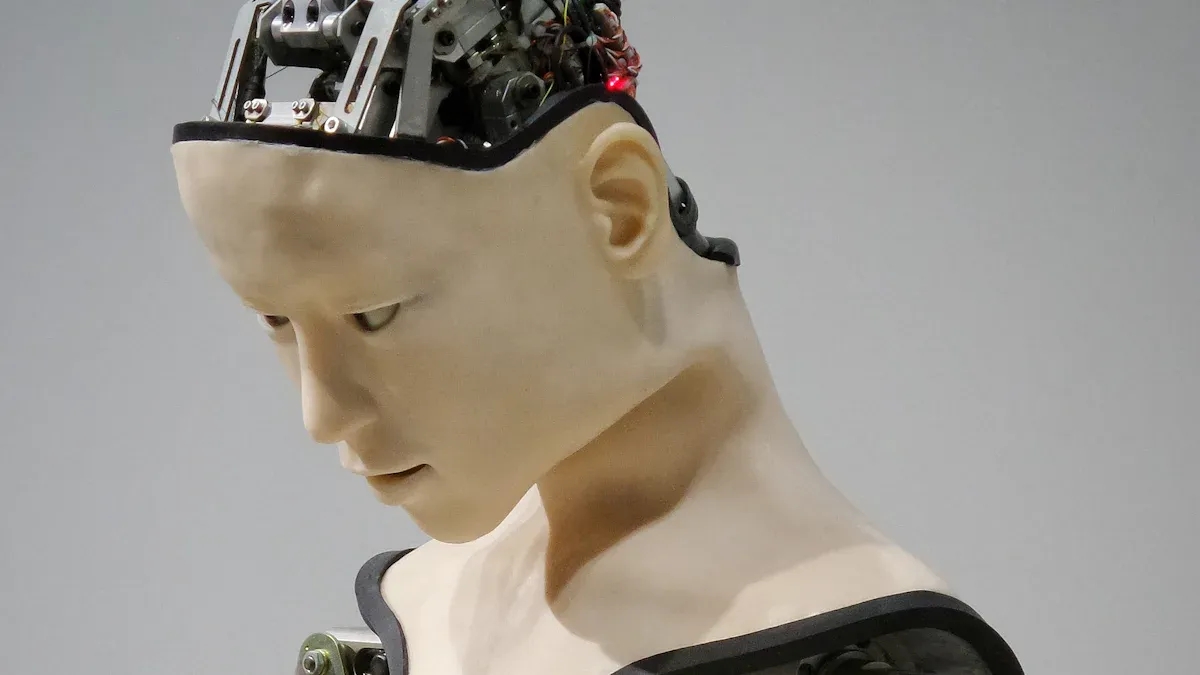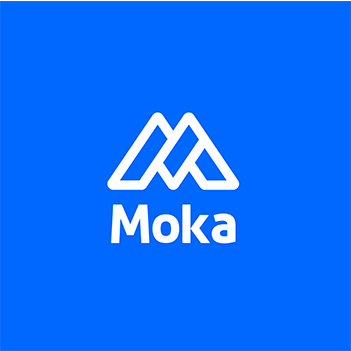How Digital Tools Are Revolutionizing Headhunting in 2025

Imagine a world where finding the perfect candidate feels effortless. That’s the reality headhunting 4.0 brings to the table in 2025. With digital tools leading the charge, recruitment has become faster, smarter, and more precise. Tools like Application Tracking Systems (ATS) now handle tedious tasks like collecting and analyzing candidate data. AI and machine learning predict candidate success, helping you make better hiring decisions. These innovations don’t just save time—they also create a smoother experience for candidates by reducing wait times and simplifying interactions. The digital revolution is here, and it’s reshaping how you connect with top talent.
Key Takeaways
Digital tools make hiring faster and easier. They handle tasks so you can connect with people better.
AI helps choose the right candidates by predicting success. It also reduces unfairness and uses data for smart decisions.
Social media helps find people not actively job hunting. Share real content and run focused campaigns to attract them.
A good experience for candidates improves your company’s image. Keep them updated and involved during the hiring process.
Be flexible with your hiring plans. Use new tools to stay ahead in the changing job market.
Why Headhunting 4.0 Is the Future of Recruitment
The evolving demands of modern recruitment
Navigating global talent pools and remote work
Recruitment has gone global. You’re no longer limited to local candidates, and that’s exciting. But managing a global talent pool comes with challenges. Remote work has made it easier to connect with candidates worldwide, yet it also means you need tools to handle time zones, cultural differences, and virtual interviews. Headhunting 4.0 equips you with digital tools to navigate these complexities. With AI-driven platforms, you can identify top talent across borders without breaking a sweat.
Addressing the need for speed and precision
In today’s fast-paced world, speed matters. You can’t afford to lose top candidates because your process is too slow. Headhunting 4.0 focuses on efficiency. Digital tools like applicant tracking systems (ATS) streamline workflows, while automation ensures you don’t waste time on repetitive tasks. Precision is equally important. AI algorithms help you match candidates to roles with pinpoint accuracy, ensuring you find the right fit every time.
Benefits of digital tools in headhunting
Streamlining workflows and saving time
Imagine cutting hours from your recruiting process. That’s what digital tools bring to the table. By automating tasks like resume parsing and candidate pre-screening, you can focus on what really matters—building relationships and refining your recruiting strategies. In fact, data-driven recruitment can save you up to 23 hours weekly. That’s time you can reinvest in high-value activities.
Enhancing decision-making with data insights
Data is your secret weapon. It helps you identify bottlenecks, improve candidate experience, and even forecast hiring needs. Here’s how:
Improve candidate experience by addressing pain points in applications.
Promote fair hiring by tracking diversity metrics.
Strengthen your employer brand by aligning hiring with company values.
With these insights, you can refine your recruiting strategies and make decisions that drive success.
Key trends driving digital transformation
The rise of AI and automation in HR
AI is no longer a buzzword—it’s a game-changer. It powers predictive analytics, streamlines workflows, and even reduces bias in hiring. Leaders in HR agree that while AI handles repetitive tasks, it frees you to focus on strategic work. This balance between automation and the human touch defines headhunting 4.0.
Increasing reliance on analytics for strategic hiring
Analytics are reshaping how you approach recruitment. By tracking metrics and predicting trends, you can align your hiring strategies with business goals. Data democratization ensures everyone on your team has access to the insights they need, making your process more collaborative and effective.
Leveraging AI and Automation in Headhunting

AI-powered candidate sourcing
Identifying passive candidates with AI algorithms
Finding passive candidates—those not actively job hunting—can feel like searching for a needle in a haystack. AI algorithms make this process much easier. These tools analyze online profiles, social media activity, and professional networks to identify potential candidates who match your job requirements. You can even target individuals based on their skills, experience, and career interests. This approach ensures you don’t miss out on top talent just because they aren’t actively applying.
Automating job board searches and resume parsing
Manually sifting through job boards and resumes is time-consuming. Automation changes the game. AI-powered tools can scan thousands of resumes in seconds, highlighting the most relevant ones. They also automate job board searches, ensuring your postings reach the right audience. This not only saves time but also improves your chances of finding the perfect fit.
Benefit | Description |
|---|---|
Automates tasks like job ad distribution and candidate pre-screening, freeing up recruiters' time. | |
Improved Candidate Experience | AI engages candidates 24/7, answering questions and assisting with applications. |
Enhanced Diversity | Promotes job opportunities to under-represented groups, supporting diversity initiatives. |
Tools for automated screening
Applicant tracking systems (ATS)
Applicant tracking systems are essential for modern recruitment. These tools simplify the hiring process by organizing and tracking candidates at every stage. They can automatically disqualify applicants who don’t meet your criteria, rank resumes based on relevance, and even schedule interviews. With ATS, you can focus on the most promising candidates without getting bogged down by administrative tasks.
Chatbots for initial candidate engagement
Chatbots are your 24/7 recruitment assistants. They handle initial candidate interactions, answering questions, collecting information, and guiding applicants through the process. This keeps candidates engaged while freeing up your time for more strategic tasks. Plus, chatbots ensure no candidate feels ignored, improving their overall experience.
Practical applications of AI in recruitment
Reducing bias in candidate selection
AI can help you create a fairer hiring process. By concealing demographic details like age, gender, and ethnicity, AI reduces unconscious bias. When trained on diverse data sets, these tools can make more equitable decisions than humans. This ensures you focus on skills and qualifications, not irrelevant factors.
Saving time with automated shortlisting
Shortlisting candidates can take hours—or even days. Automated recruitment tools streamline this process by pre-selecting candidates who meet your criteria. They analyze resumes, rank applicants, and provide you with a curated list of top contenders. This not only saves time but also ensures you don’t overlook qualified candidates.
Social Media and Digital Hiring Tools for Outreach

Using social media for targeted recruitment
LinkedIn for professional networking and outreach
LinkedIn is a goldmine for professional networking. It connects you with a vast pool of professionals, from industry leaders to potential hires. You can use its advanced search filters to find candidates who meet your specific criteria. Recruiters love LinkedIn because it boosts visibility for job openings and helps them identify top talent quickly. If you’re looking to expand your reach, this platform is a must-have in your digital hiring tools arsenal.
Engaging candidates on platforms like Instagram and Twitter
Instagram and Twitter might not seem like traditional recruitment platforms, but they’re perfect for engaging candidates creatively. These platforms let you showcase your company’s personality through visuals and short, impactful messages. Younger candidates, in particular, spend a lot of time here. By sharing behind-the-scenes content or employee stories, you can create an emotional connection that draws them in.
Building a strong employer brand
Tools for creating engaging content
Creating engaging content is easier than ever with tools like Canva or Adobe Spark. These platforms help you design eye-catching posts that highlight your company’s values and culture. When employees share these posts, it amplifies your reach and builds trust with potential candidates. A consistent brand voice across all channels ensures your message resonates.
Showcasing company culture through digital platforms
Your company culture is a powerful recruitment tool. Highlighting it on digital platforms can make or break your hiring efforts. Did you know 83% of recruiters believe employer branding is crucial? Candidates want to work for companies that align with their values. By showcasing your culture, you not only attract top talent but also reduce hiring costs by up to 50%.
Practical strategies for outreach
Reaching passive candidates with social media campaigns
Passive candidates aren’t actively job hunting, but they’re still open to opportunities. Social media campaigns can help you reach them effectively. Invest in targeted ads on platforms like Facebook and LinkedIn. Highlight unique aspects of your company, like professional growth opportunities or a positive work environment. Don’t forget to make your application process mobile-friendly to keep their interest.
Strengthening trust with authentic branding
Authenticity matters. Candidates can spot a fake brand from a mile away. Share real stories from your employees and keep your messaging consistent. When you’re transparent about your values and workplace culture, you build trust. This trust makes candidates more likely to engage with your recruitment efforts.
Data-Driven Decision-Making with Digital Tools
The role of analytics in headhunting 4.0
Tracking recruitment metrics for better insights
You can’t improve what you don’t measure. That’s why tracking recruitment metrics is essential in headhunting 4.0. Metrics like time to fill, cost per hire, and quality of hire give you a clear picture of your hiring process. By monitoring these, you can identify bottlenecks, reduce inefficiencies, and improve candidate experience. For example:
Time to fill shows how quickly you’re closing roles.
Quality of hire helps you evaluate the long-term success of your hires.
Offer acceptance rate reveals how appealing your offers are to candidates.
These insights help you make smarter decisions and refine your strategies.
Predicting hiring trends with data
Data analytics takes recruitment to the next level by helping you predict hiring trends. By analyzing past hires, you can identify patterns in successful candidates. Predictive analytics even forecasts a candidate’s potential performance based on their skills and history. This means you can focus on hiring people who are more likely to thrive in your organization. It’s like having a crystal ball for your hiring process.
Tools for data-driven recruitment
Recruitment analytics platforms
Recruitment analytics platforms like Hibob HR, BambooHR, and OnPay are game-changers. They collect and analyze data from every stage of the hiring process. These tools help you track metrics, identify trends, and make data-driven decisions. With their user-friendly dashboards, you can easily spot what’s working and what needs improvement.
Predictive analytics software
Predictive analytics software takes things a step further. It doesn’t just show you what’s happening—it tells you what’s likely to happen next. Here’s how it helps:
Engage passive candidates by predicting their openness to new opportunities.
Prevent turnover by spotting early signs of dissatisfaction.
Speed up hiring by automating candidate analysis.
Enhance the candidate experience with timely feedback.
Build agile strategies by adapting to market trends.
These tools make your hiring process faster, smarter, and more effective.
Practical applications of analytics
Optimizing job postings for better visibility
Analytics can transform how you create and share job postings. Take a look:
Application of Analytics | Description |
|---|---|
Tailoring the process to attract high-quality candidates who fit your team. | |
Job Performance Data Analysis | Identifying traits linked to success in specific roles. |
Social Media Analytics | Targeting job ads to the right audience. |
Candidate Behavior Monitoring | Spotting engaged candidates and improving the process. |
Employee Retention Data Analysis | Reducing turnover by refining your hiring strategies. |
By leveraging these insights, you can make your postings stand out and attract the right talent.
Improving hiring strategies with actionable insights
Data doesn’t just help you hire—it helps you hire better. By analyzing the origins and traits of successful employees, you can refine your strategies. For instance, if data shows that employees from a specific source perform better, you can focus your efforts there. Actionable insights like these ensure you’re always improving and staying ahead in the competitive hiring landscape.
Enhancing Candidate Experience with Digital Tools
Why candidate experience is critical
The impact of positive experiences on employer reputation
Your candidate experience can make or break your employer brand. When candidates have a positive experience, they’re more likely to share it with others, turning into brand ambassadors. In today’s job market, where reviews spread like wildfire on social media, this matters more than ever. Did you know that 55% of candidates avoid companies with poor Glassdoor ratings? On the flip side, 66% of candidates are more likely to refer others if they had a great experience. A strong reputation attracts top talent and boosts your hiring success.
Retaining top talent through engagement
Engaged candidates are more likely to accept offers and stay with your company long-term. A positive hiring journey sets the tone for their future with you. Candidates who feel respected during recruitment often become productive employees. They’re also more likely to align with your company’s values, improving overall productivity and reducing turnover.
Tools for improving candidate experience
Personalized communication platforms
Personalized communication tools keep candidates informed and engaged. AI-powered chatbots, for example, provide real-time updates and answer questions instantly. These tools make candidates feel valued by offering tailored interactions. Transparency is key—83% of candidates say their experience improves when recruiters keep them in the loop.
Virtual interview and onboarding tools
Virtual tools streamline interviews and onboarding, making the process seamless. Platforms like Zoom or Microsoft Teams allow you to connect with candidates anywhere. For onboarding, digital employee onboarding tools simplify paperwork and introduce new hires to your company culture. Companies like Salesforce use immersive video technology to showcase their values, enhancing engagement from day one. This approach not only improves the candidate experience but also strengthens employee onboarding, setting the stage for success.
Practical strategies for engagement
Creating seamless application processes
A smooth application process is essential. Use tools like ATS to simplify applications and ensure compatibility across devices. Standardized formats and clear instructions help candidates navigate the process easily. When you make it simple, you reduce frustration and keep candidates interested.
Maintaining engagement with regular updates
Regular updates show candidates you value their time. Automated tools can send timely messages, like “You’ve been shortlisted for the next stage—stay tuned!” Even if there’s no news, a quick update reassures candidates that they’re still in the running. This proactive communication keeps them engaged and reduces the chances of withdrawal.
The world of headhunting is evolving rapidly, and digital tools are at the heart of this transformation. To stay ahead, you need to embrace adaptability and commit to continuous learning. Here’s what you should focus on:
Digital hiring tools are now essential for recruitment success.
Virtual recruiters are playing a bigger role in connecting with top talent.
Adapting your hiring strategies is key to staying competitive in today’s job market.
By staying flexible and leveraging these tools, you’ll be ready to thrive in the future of recruitment. 🚀
FAQ
What are the benefits of using digital tools in recruiting?
Digital tools make your recruitment process faster and more efficient. They help you automate repetitive tasks, analyze data, and recruit better matches for your roles. These tools also improve candidate experience by streamlining communication and simplifying applications. You’ll save time and achieve your recruitment goals more effectively.
How can I use social media to enhance my recruiting strategy?
Social media platforms like LinkedIn and Instagram let you connect with candidates directly. You can share job postings, showcase your company culture, and run targeted campaigns. This strategy helps you reach passive candidates and build trust through authentic branding. It’s a great way to strengthen your recruiting efforts.
What role does AI play in modern recruiting?
AI transforms how you recruit by automating tasks like resume screening and candidate sourcing. It identifies patterns to match candidates with roles more accurately. AI also reduces bias in hiring decisions, helping you recruit better matches. With AI, you can focus on strategies that align with your recruitment goals.
How do analytics improve hiring strategies?
Analytics give you insights into every stage of the recruitment process. They help you track metrics like time to fill and cost per hire. By analyzing data, you can refine your strategy, predict hiring trends, and optimize job postings. This ensures your recruiting efforts are always improving.
What’s the best way to create a seamless recruitment process?
Start by using tools like applicant tracking systems to organize applications. Keep candidates engaged with regular updates and personalized communication. A clear strategy, combined with digital tools, ensures you recruit better matches while providing a positive experience for candidates.
See Also
AI-Driven Recruitment Platforms Transform Talent Acquisition Strategies
AI Recruitment Tools Redefine Contemporary Hiring Approaches
Enhance Your Recruitment Process With ATS Technology Innovations
Achieving Recruitment Excellence Through MokaHR's AI Solutions
From recruiting candidates to onboarding new team members, MokaHR gives your company everything you need to be great at hiring.
Subscribe for more information

